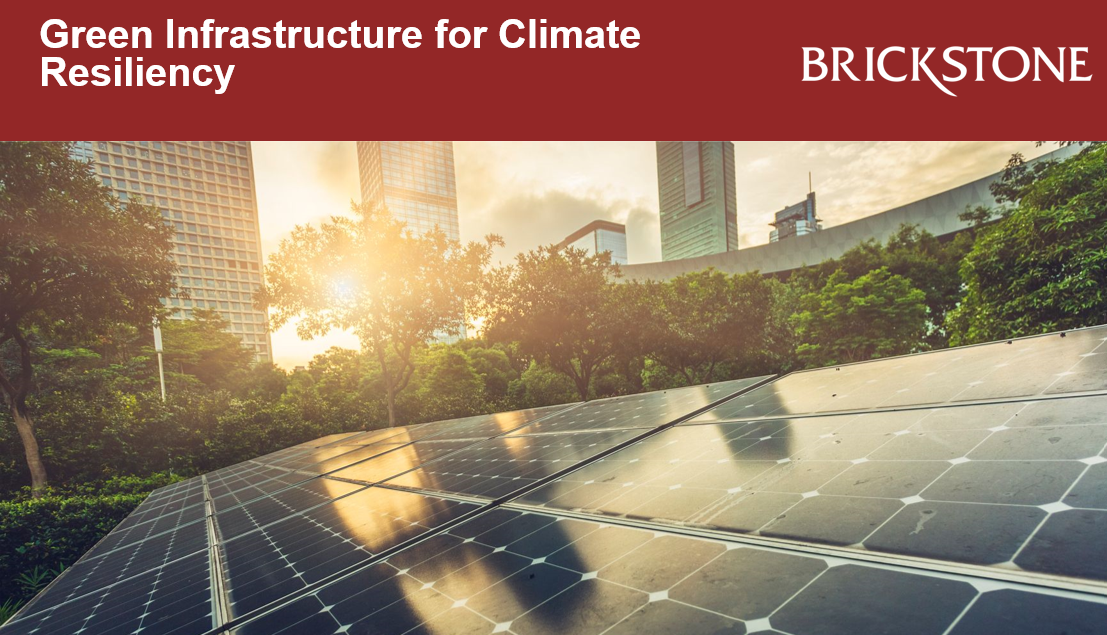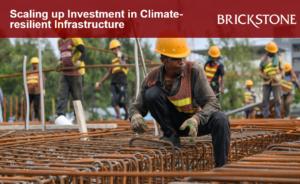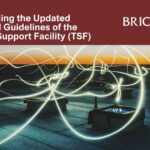Green Infrastructure for Climate Resiliency
Climate change is affecting the world now more than ever. According to the UN, the impacts of climate change, from shifting weather patterns that threaten food production, to rising sea levels that increase the risk of catastrophic flooding, are global in scope and unprecedented in scale. And without drastic and collective action today, adapting to these impacts in the future will be more difficult and costly.
Climate experts have however noted that as a way forward, investing in green infrastructure can help enhance resilience in the built environment today and into the future.
This article by Brickstone, reviews some institutional reports and publications on green infrastructure for climate resiliency, highlighting key insights and takeaways.
Climate Change And Green Infrastructure
According to WHO, climate change is impacting human lives and health in a variety of ways. It threatens the essential ingredients of good health – clean air, safe drinking water, nutritious food supply and safe shelter – and has the potential to undermine decades of progress in global health.
Climate change currently represents a major challenge in the world today, as it threatens the lives and livelihoods of over 100 million in extreme poverty. As a major impact of this menace, climate change also exposes nations to exponential collateral damage to infrastructure, disrupting services and exacting a significant human and economic toll in such nations.
Between 2030 and 2050, climate change is expected to cause approximately 250 000 additional deaths per year from malnutrition, malaria, diarrhoea and heat stress alone. The direct damage costs to health are estimated to be between US$ 2–4 billion per year by 2030. Areas with weak health infrastructure – mostly in developing countries – will be the least able to cope without assistance to prepare and respond.
Minimizing these impacts, experts have proffered the adoption of green infrastructure as an effective adaptive measure for climate resiliency, while at the same time providing multiple other social, environmental and economic benefits to communities.
How Does Green Infrastructure Improve Climate Resiliency?
Green infrastructure strategies can help communities prepare for and manage climate change impacts. According to United States EPA, the following are ways to which green infrastructure strategies can enhance climate resilience in communities:
Manages Flood Risk: High intensity storms are expected to become more frequent and intense as global temperatures continue to rise. As a result, the risk of flooding is likely to increase dramatically. Green infrastructure can help manage both localized and riverine floods by absorbing rainfall, preventing water from overwhelming pipe networks and pooling in streets or basements. Green infrastructure, open space preservation, and floodplain management can complement gray infrastructure approaches by reducing the volume of stormwater that flows into streams and rivers, protecting floodplain functions and reducing infrastructure and property damage.
Builds Resilience To Drought: Fragile local water supplies are being stressed by decreased precipitation associated with climate change in some areas of the country. When a storm event does occur, rain falling on roofs, parking lots, streets, and other hard surfaces runs directly into city storm drains or water bodies. Communities are losing valuable water that could be used or stored for use when it is needed most. Prepare for drought by infiltrating water where it falls. Green infrastructure can help replenish groundwater reserves, relieving stress on local water supplies and reducing the need to import potable water.
Reduced The Urban Heat Island Effect: Urban heat islands occur when cities replace natural land cover with dense concentrations of pavement, buildings, and other surfaces that absorb and retain heat. This effect increases energy costs (e.g., for air conditioning), air pollution, and heat-related illness and mortality. Climate change will likely lead to more frequent, more severe, and longer heat waves during summer months. Extreme heat events often affect our most vulnerable populations first. Trees, green roofs, and vegetation can help reduce urban heat island effects by shading building surfaces, deflecting solar radiation, and releasing moisture into the atmosphere.
Lowers Building Energy Demands: Trees and vegetative cover can lower ambient air temperatures in urban areas through shading, windbreak, and evapotranspiration. The result is lower demand for the energy needed to provide air conditioning in summer months. Green roofs can greatly reduce the amount of energy needed to keep the temperature of a building comfortable year-round by insulating against extensive heat loss in the winter and heat absorption in the summer. A National Research Council of Canada study found that an extensive green roof reduced daily energy demand for air conditioning in the summer by over 75 percent.
Improves Coastal Resiliency: Coastal areas are particularly vulnerable to the effects of climate change. Sea-level rise and heavy storms can cause erosion and flooding of sensitive coastal areas and destroy natural habitat. Climbing global temperatures will result in continued sea level rise, amplified storm surges, and more frequent and intense storms that will continue to erode the shoreline and damage property and infrastructure. Living shorelines can be created using plants, reefs, sand, and natural barriers to reduce erosion and flooding. Restoring affected wetlands can reduce wave heights and property damage.
Reduces Energy Needed To Manage Water: Communities and their residents use a lot of energy treating and moving drinking water and wastewater. They can significantly reduce municipal and domestic energy use with green infrastructure practices that will reduce rainwater flows into sewer systems, recharge aquifers, and conserve water. Cities, states, or regional entities should consider tying energy efficiency savings resulting from implementing these practices to reduced demand at power plants.
Read more here.






